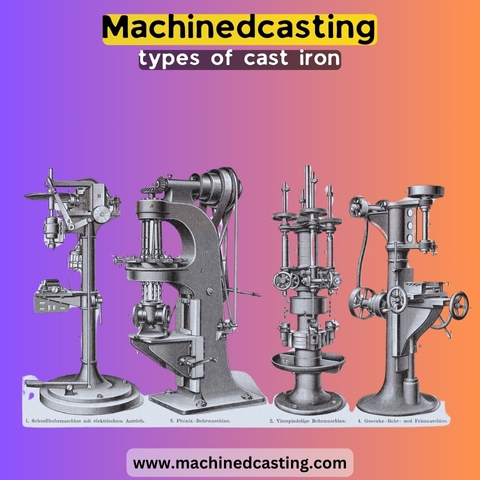Cast iron, with its robustness and versatility, has been a staple in kitchens and industries for centuries. From cookware to machinery, its various forms serve diverse purposes. Exploring the realm of cast iron unveils a spectrum of types, each tailored for specific applications. Let's embark on a journey through the different types of cast iron and their unique characteristics.
Gray Cast Iron: Among the most common types of cast iron, gray cast iron owes its name to the graphite flakes in its structure, imparting a gray appearance. Its excellent machinability and damping capacity make it ideal for engine blocks, pipes, and stove parts. Its low melting point facilitates casting intricate shapes, contributing to its widespread usage.
White Cast Iron: White cast iron stands in stark contrast to its gray counterpart due to its absence of graphite. Instead, its carbon content is primarily in the form of cementite, rendering it hard and brittle. While not suitable for most applications due to its brittleness, white cast iron finds use in wear-resistant applications like grinding balls and liners for ball mills.
Ductile Cast Iron: Also known as nodular or spheroidal graphite iron, ductile cast iron exhibits improved ductility and toughness compared to gray cast iron. Its unique microstructure features spherical graphite nodules, enhancing its flexibility and impact resistance. Ductile cast iron finds extensive application in automotive components, machinery parts, and pipes, where strength and ductility are paramount.
Malleable Cast Iron: Through a controlled heat treatment process, white cast iron can be converted into malleable cast iron, characterized by its malleability and toughness. Its microstructure comprises irregularly shaped nodules of graphite, imparting enhanced ductility. Malleable cast iron is well-suited for applications requiring intricate shapes and moderate strength, such as pipe fittings and agricultural equipment.
Compacted Graphite Iron (CGI): Combining attributes of gray and ductile cast iron, CGI features a graphite structure that is intermediate between the two types. This results in a material with improved strength, thermal conductivity, and damping capacity compared to gray cast iron, while retaining good machinability. CGI finds application in engine blocks, cylinder heads, and brake discs, where a balance of strength and performance is critical.
Conclusion: The world types of cast iron is as diverse as it is fascinating, offering a range of materials tailored to meet specific needs across various industries. From the classic gray cast iron to the advanced properties of ductile and compacted graphite iron, each type brings its own set of characteristics and applications to the table. Understanding these distinctions is key to harnessing the full potential types of cast iron in engineering, manufacturing, and beyond.




